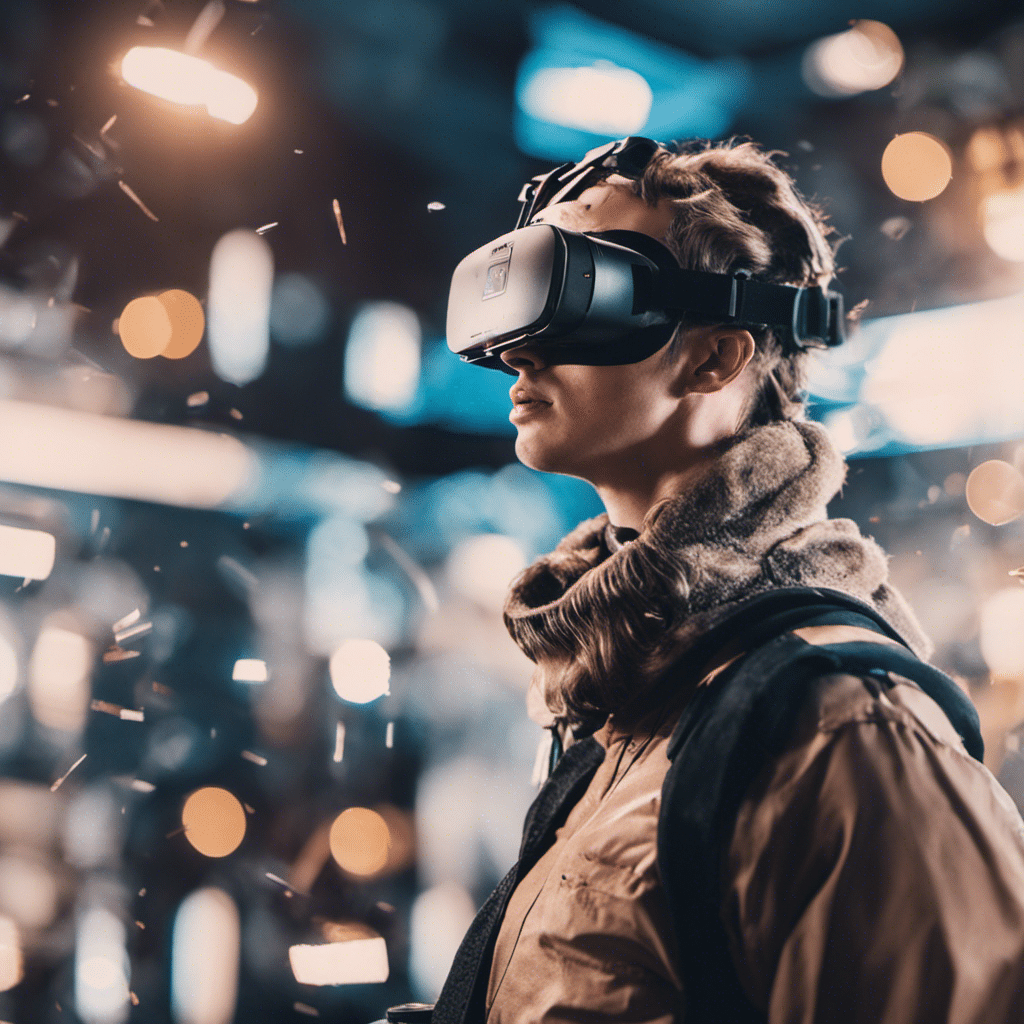Imagine plunging into a digital realm where every sight, sound, touch, taste, and scent mirrors reality so flawlessly it defies distinction. That dream is the promise of full-dive virtual reality, a concept that’s long tantalized tech enthusiasts through the lens of science fiction.
It’s a world where the digital and physical merge, making experiences indistinguishable from real life.
Today’s VR tech, however, tells a different story. While headsets and 3D audio transport us to new worlds, there’s a clear line where the virtual ends and reality resumes.
The sense of touch is rudimentary, taste and smell are absent, and the freedom to move remains constrained by the physical space around us.
In the journey we’re about to embark on, we’ll gauge the distance between the virtual reality of today and the full-dive dreams of tomorrow. We’ll unravel the innovations charting the course and the strides we need to make before we can step, or rather dive, into the ultimate immersive experience.
Virtual Reality Today: Not Yet Full-Dive VR
Look into today’s virtual reality, and you’ll find yourself in a world where the impossible is now possible. High-resolution VR headsets like the Oculus Quest and Valve Index offer vivid visuals that command your sight, while haptic feedback suits vibrate and buzz, teasing the sense of touch across your skin.
With room-scale VR, you can walk around your virtual space, picking up objects and battling foes, transforming your living room into a stage for adventure.
In this arena, tech giants like Meta and startups alike are racing to sharpen the blurriness of the virtual. They’re pushing boundaries further, with researchers in labs across the globe working tirelessly to stitch together the next chapter of VR.
These teams are the hidden heroes, bridging the gap between what we experience and what we imagine.
Yet, as we reach out to touch the virtual cherry blossom or feel the simulated rain on our skin, we find a void. The textures, the warmth, and the full spectrum of sensation remain elusive.
Current technology can’t yet mimic the subtle complexities of the human experience, reminding us that we’re visitors in a digital world, not yet fully immersed. We stand at the edge of a breakthrough, looking across the chasm between current VR and the rich, multisensory tapestry of full-dive VR.
Are BCIs the Gateway to Full-Dive VR?
Brain-computer interfaces (BCIs) are not just science fiction; they are the key to unlocking full-dive virtual reality. BCI devices form a direct pathway between our brains and computers, translating neural activity into digital commands and vice versa.
BCI technology could one day let us live our wildest dreams in virtual worlds with nothing but a thought.
Recent strides in BCI tech have been nothing short of remarkable. We’ve witnessed paralyzed individuals move prosthetic limbs with their minds, and researchers decode brain waves into words with increasing accuracy.
These triumphs signal a future where our brains seamlessly operate within digital spaces. However, the journey is not without its hurdles: fine-tuning this technology to handle the complexity of human senses and emotions remains a formidable challenge.
Peering into the crystal ball of BCIs, we see a path strewn with obstacles, from ensuring safety and privacy to the sheer technical feat of simulating reality. Engineers and neuroscientists must collaborate to craft an interface delicate enough to dance with our neurons yet robust enough to create worlds as rich as our own.
As we stand on this frontier, it’s clear that BCIs aren’t just an option for full-dive VR; they’re the bridge we need to cross into the next dimension of human experience.
The Ethical Challenges Posed By Full-Dive VR
When technology breaches the inner sanctum of the human brain, it brings a tangle of ethical questions with it. Imagine a world where our thoughts, once private, could be accessed or influenced by a VR system.
The very notion sparks intense debates on the sanctity of the mind and the moral ramifications of such intimate access.
On the technical side, the challenges are just as daunting. Safety is paramount when dealing with the brain; one misstep could have significant consequences. Privacy concerns also loom large, as the data processed by BCIs could be sensitive.
And the hardware?
It must leap from clunky prototypes to something the average person could use comfortably and affordably. These are hefty barriers but not impossible.
Experts suggest a cocktail of rigorous testing, transparent data policies, and next-gen materials to pave the way forward. They agree that robust ethical frameworks and technological innovation must go hand in hand, ensuring full-dive VR is safe and respectful of our humanity.
As these voices chart the course ahead, it’s clear that tackling these ethical challenges isn’t just about making full-dive VR a reality; it’s about doing it right.
The Ethical Challenges Posed By Full-Dive VR
When technology breaches the inner sanctum of the human brain, it brings a tangle of ethical questions with it. Imagine a world where our thoughts, once private, could be accessed or influenced by a VR system.
The very notion sparks intense debates on the sanctity of the mind and the moral ramifications of such intimate access.
On the technical side, the challenges are just as daunting. Safety is paramount when dealing with the brain; one misstep could have significant consequences. Privacy concerns also loom large, as the data processed by BCIs could be sensitive.
And the hardware?
It must leap from clunky prototypes to something the average person could use comfortably and affordably. These are hefty barriers but not impossible.
Experts suggest a cocktail of rigorous testing, transparent data policies, and next-gen materials to pave the way forward. They agree that robust ethical frameworks and technological innovation must go hand in hand, ensuring full-dive VR is safe and respectful of our humanity.
As these voices chart the course ahead, it’s clear that tackling these ethical challenges isn’t just about making full-dive VR a reality; it’s about doing it right.
So, How Close Are We to Full-Dive VR?
Trailblazing breakthroughs are lighting the way to full-dive VR, with each innovation carving a deeper path forward. For instance, researchers at UC San Francisco recently translated neural signals into synthetic speech, hinting at future BCIs capable of conveying our thoughts in virtual conversations.
Experts, however, caution against expecting a sci-fi future just around the corner. They predict a more conservative timeline, with several decades of VR development before full-dive VR could become a consumer reality.
Full-dive VR is not a journey of solitary pursuit but a symphony of disciplines (neuroscience, computer science, ethics, and more), each playing a vital part in this complex concerto.
As we march towards this new horizon, it’s clear that no single field can herald the age of full-dive VR alone. It will take a united front of diverse expertise converging to sculpt this technology from the stuff of dreams into the fabric of daily life.
Only through this multidisciplinary collaboration can we hope to not just dream of full-dive virtual reality but to one day live it.
Seisan is Your Best Bet for Virtual Reality Development
Are you ready to leap into the future of virtual reality? At Seisan, we’re not just observers of this thrilling evolution; we’re active participants, shaping the virtual landscapes of tomorrow.
Whether you’re looking to pioneer new VR frontiers or seeking to refine an existing virtual experience, our team is equipped with the expertise and passion to bring your vision to life.
Take the first step towards redefining what’s possible.
With Seisan’s VR consulting and VR development prowess at your disposal, the journey from concept to reality is smoother and more innovative. We understand the intricacies of virtual environments and are adept at tailoring solutions to meet your unique needs.
Don’t let your virtual dreams stay in the realm of imagination. Contact Seisan today, and let’s craft the digital experiences that will captivate users for years.




